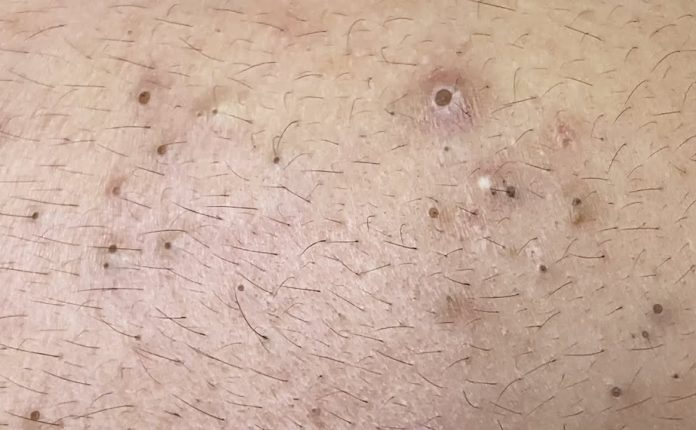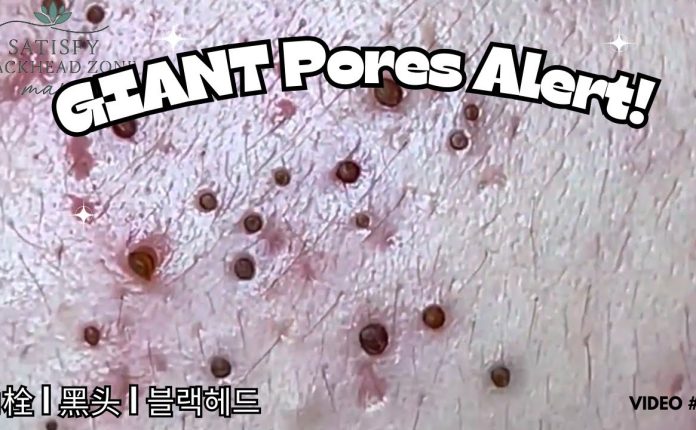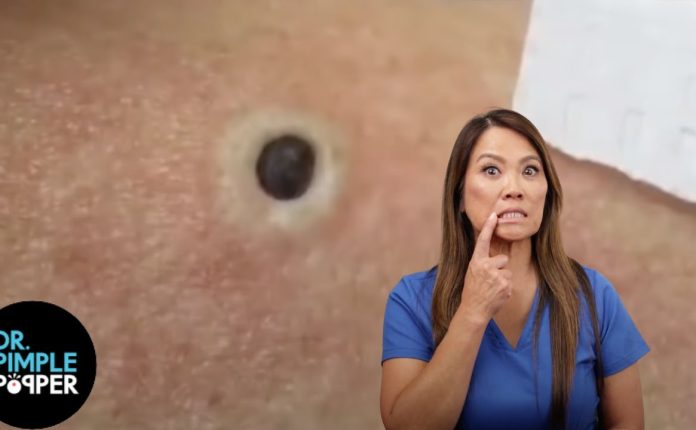
What are blackheads? Facts and The Best Treatments (Video Below)
Did you know that you can easily treat and prevent blackheads naturally at home? You can, and I will tell you how you can easily start today. Before you worry about getting rid of blackheads, it’s essential to know what blackheads are and what causes them. Okay, so what are blackheads?
What Are Blackheads?
Blackheads are raised bumps on the surface of your skin due to a clogged hair follicle. These bumps are called blackheads because they are dark, yellowish, or black-colored. Blackheads are a mild form of acne and do not cause inflammation.
Fun Skin Fact: Blackheads are commonly found on the face but can also be found on the back, chest, neck, ears, shoulders, and arms.
What Causes Blackheads?
Blackheads form when there is a clog in your skin hair follicles. Each hair follicle on your skin contains one hair and one sebaceous gland. Sebaceous glands produce oil. This oil, called sebum, is your body’s natural moisturizer. It helps keep your skin moisturized and soft.
When your skin sheds dead skin cells, they can get into the hair follicle mixed with hardened oil and other debris. Once a hair follicle is filled with an excess of oil and skin cells a plug develops and pushes to the skin’s surface. These bumps that form are called comedones. When the skin over the bump opens, the comedo is exposed to the air and oxidizes. This oxidation causes the comedo to turn dark or black.
Fun Skin Fact: Blackheads may look like specks of dirt trapped in your skin, but they are not! Blackheads have very little to do with your skin being dirty!
What Causes Blackheads On Nose?
Your nose can have more blackheads than the rest of your face because it has a higher concentration of hair follicles and oil glands. These hair follicles are very close together and can fill up quickly and form a blackhead.
Fun Skin Fact: There are about 5 million hair follicles on the adult human body, and men have a few hundred thousand more than women.
What Is The Difference Between A Blackhead And A Sebaceous Filament?
You now know that a blackhead is a clogged hair follicle containing skin cells, oil, and other debris. So what is a sebaceous filament, and why does it matter?
A sebaceous filament:
-
A naturally occurring part of your skin is designed to bring oil to its surface to help protect it keep it soft and well moisturized.
-
It is similar to open comedones (blackheads), but the difference is that sebaceous filaments are mainly solidified impactions of oil without the cell matter.
-
They are most often found on the nose.
Fun Skin Fact: Your skin needs sebum (oil) to keep it soft and moisturized. Having oil is a good thing. Maintaining skin balance is crucial, so the sebaceous glands don’t go into overdrive and over-produce sebum. This over-production can clog pores and cause blackheads.

How Can You Tell The Difference Between A Blackhead And A Sebaceous FIlament?
Blackheads tend to be darker than sebaceous filaments. Blackheads are typically dark or black, and sebaceous filaments are lighter and gray.
-
Blackheads are not as common as sebaceous filaments. If you notice a fairly even random pattern formation. Blackheads tend to be solitary eruptions.
-
Nothing can be done to get rid of sebaceous filaments, but blackheads can be extracted.
-
Blackheads have a raised rim where it is clogged, but sebaceous filaments usually feel smooth to the touch. Sebaceous filaments only become visible when the lining of pores fills with sebum.
-
Blackheads tend to be larger and easy to see, whereas sebaceous filaments are smaller and usually only visible when looking close up in the mirror.
Blackheads vs. Whiteheads vs. Pimples
Okay, you definitely should be getting a good idea of what a blackhead is. But what about whiteheads, and pimples, and milia… oh my!
-
A whitehead is pretty much the same as a blackhead, but it is a closed comedo. This means the opening of the hair follicle remains closed and air and light do not reach the clog, and the plug remains white.
-
Milia is also pretty much the same thing as a blackhead and whitehead. Milia are whiteish, pearl-like masses of sebum (oil) and dead skin cells under the skin. Milia is more common in dry skin types and forms in much smaller pores. Because these pores are tiny, the buildup of skin cells and oil gets trapped in the hair follicle with no way to get out.
-
Pimples, also are known as pustules, are inflamed blemishes filled with a white or yellowish center containing pus, a fluid consisting of white blood cells, bacteria, and other debris produced from an infection. Pimples are usually swollen and red lesions filled with pus on the skin.
Are Blackheads Bad?
No!
Having blackheads doesn’t mean that you are dirty or don’t care for your skin. They aren’t a serious medical problem, and you should not worry about them. Because guess what, almost every single person gets them.
They are pores that get filled with skin cells, oil, and other debris. This is just how the skin works. You don’t have to love it, but please don’t hate it. There is no need to feel embarrassed or ashamed of your blackheads because it isn’t a sign of you doing something wrong or bad. It’s just your skin’s natural process of dealing with follicles that get clogged.
Stop obsessing over your pores to see if they’re clogged or not. Definitely turn off the magnifying mirror because everything, I mean everything, looks way worse at 10x zoom. People have a hard time seeing those bumps with the human eye, so don’t let your self-esteem plummet because of them.
If you see advertising or a skincare product making you feel like you need to be worried, ashamed, or grossed out about your blackheads, then don’t pay them any mind. They are just trying to make money off your insecurity. Guess what? Fear sells.
Fun Skin Fact: The development of blackheads is most often NOT related to the cleanliness of the skin.
Blackheads Treatment
You now know all about blackheads. What they are, how they’re caused, and how to distinguish between blackheads and other skin blemishes. Now you need to know the best way to treat blackheads.
Even though blackheads aren’t a nasty problem that you need to dread, you should always do your best to have healthy and balanced skin. Taking care of your skin and following good skincare practices is wise.
Fun Skin Fact: You can’t permanently get rid of blackheads. Nope. Never. If you were to do so, you would have to either remove hair follicles from your skin or seal them shut. Neither is an option because your skin would die. That is way worse than having blackheads, trust me.
Keep Your Skin Moisturized
Blackheads are formed because too much oil is built up in the pore, and it gets clogged with skin cells and other debris. So you want to be sure to keep your skin moisturized, so it is balanced and doesn’t get too dry.
Why is this important?
Dry skin is when the sebaceous glands aren’t producing enough oil to moisturize themselves, and this can cause them to kick into overdrive and start pumping out extra sebum. This excess oil can clog the pores and cause a blackhead to form. Find a moisturizer that works for your skin type, and be sure to keep your skin hydrated, moisturized, and balanced.
Don’t Over- Cleanse Your Skin
Did you know that over-cleansing your skin can dry it out, create an unbalance, and do more harm than good? Yep. It’s true. Over-cleansing your skin can strip it of the necessary oils to moisturize itself. And you know that this does, right? You got it. Dries it out.
Since we learned earlier that blackheads aren’t dirty skin or caused by having dirty skin, there is no reason for you to feel like you have to cleanse your skin a bunch to “clean them out.” Washing your face a lot will create more blackheads by drying out the skin and producing more clogging oil.
Don’t Scrub Too Much
The same can be said for scrubbing your skin too much. If you exfoliate your skin too often, it can be stripping, irritating, and cause more problems, just like over-cleansing. It is important to exfoliate in moderation to help remove dead skin cells from your face and help reduce blackheads. Usually, once or twice a week with a gentle exfoliating product is beneficial for blackhead treatment.
Add BHA And AHA’s Into Your Skincare Routine
Another great way to exfoliate your skin gently is using alpha and beta hydroxy acids (AHAs and BHAs). Both work by removing the top layer of your skin, cleansing your pores, and helping make your skin softer. A common AHA is glycolic acid, and salicylic acid is a common BHA.
Avoid Pore Strips
Pore strips may seem enticing because they promise to get rid of a massive area of blackheads in one go safely and efficiently. Seem too good to be true? Because it is. Sure, pore strips may help remove gunk from your pores. They also remove things that actually help your skin. Including the oil your skin needs to remain moisturized and balanced and hair follicles.
Removing these oils can cause your skin to dry out, become irritated, and be unbalanced. When this unbalance happens, your sebaceous glands panic and produce more oil, which results in more blackheads. No good.
Another harmful side effect of using pore strips is that you can actually break the blackhead in half while pulling it out. When this happens, the hair follicle can become irritated, inflamed, and cause a pimple to form. So yeah, you can turn a harmless blackhead into a painful blemish. Don’t do that. Not worth it.


